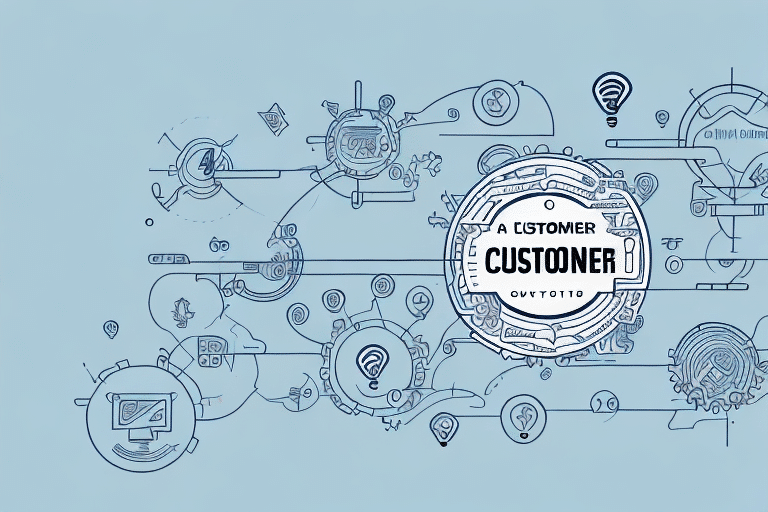Importance of Customer Retention
In today's competitive business landscape, customer retention is crucial for sustained success. Retaining loyal customers ensures a steady revenue stream and reduces the resources spent on acquiring new customers. Effective customer retention strategies lead to long-term relationships, increased loyalty, higher repeat business rates, and improved financial performance.
Benefits of Retaining Customers
One of the primary benefits of customer retention is the deeper understanding of customer needs and preferences. By analyzing customer data and feedback, businesses can tailor their products and services to better meet these needs, enhancing customer satisfaction and loyalty. Additionally, retention programs help identify and address customer issues promptly, improving the overall customer experience.
Customer Loyalty and Its Impact
Customer loyalty is a critical component of retention. Loyal customers are more likely to continue doing business with a brand and often recommend it to others, providing valuable word-of-mouth marketing. According to a Harvard Business Review study, increasing customer retention rates by 5% can boost profits by up to 95%. Building loyalty requires exceptional customer service, personalized experiences, and consistent quality.
Understanding and Calculating Customer Retention
Understanding the metrics and formulas behind customer retention is essential for businesses aiming to improve their retention rates. By quantifying retention, businesses can identify areas for improvement and track the effectiveness of their strategies.
The Customer Retention Formula
The customer retention formula calculates the percentage of customers a business retains over a specific period. The formula considers variables such as customer acquisition cost, average customer lifetime, number of customers lost, and the total number of customers at the beginning of the period. Mastering this formula helps businesses enhance their retention strategies effectively.
Metrics and KPIs to Measure Retention
Key metrics for measuring customer retention include:
- Customer Churn Rate: The percentage of customers lost over a period.
- Customer Lifetime Value (CLV): The total revenue a business can expect from a single customer account.
- Repeat Purchase Rate: The percentage of customers who make a second purchase.
- Customer Satisfaction Scores: Metrics derived from surveys or feedback forms that gauge customer happiness.
Tracking these KPIs provides actionable insights into how well a business is retaining its customers and identifies areas for improvement.
Strategies to Improve Customer Retention
Enhancing customer retention involves implementing strategies that address customer needs, preferences, and expectations. Effective strategies focus on personalization, exceptional customer service, and leveraging technology to create seamless experiences.
Best Practices for Retention
To improve retention rates, businesses should:
- Provide personalized experiences based on customer data.
- Offer exceptional customer service that promptly addresses issues.
- Implement loyalty reward programs that incentivize repeat business.
- Continuously gather and act on customer feedback.
Creating a Customer-Centric Culture
A customer-centric culture places the customer at the heart of all business decisions. This involves aligning all aspects of the business—from product development to marketing—with customer needs and preferences. Regularly collecting and acting on customer feedback through surveys and focus groups helps businesses stay attuned to evolving customer expectations.
Leveraging Technology
Technology plays a vital role in enhancing customer retention efforts. Tools such as Customer Relationship Management (CRM) software enable businesses to track interactions and provide personalized experiences. Additionally, chatbots offer 24/7 customer support, answering frequently asked questions and making product recommendations, thereby improving the overall customer experience.
Personalization and Building Relationships
Personalization is a powerful strategy for driving customer loyalty and retention. By tailoring experiences based on individual customer preferences and behaviors, businesses can create more meaningful and lasting relationships with their customers.
The Role of Personalization
Personalized experiences help businesses stand out in a crowded market. Utilizing data analytics and CRM systems, businesses can create targeted marketing campaigns and product offerings that resonate with individual customers. This not only enhances customer satisfaction but also encourages repeat business and loyalty.
Building Long-Term Relationships
Building long-term relationships requires consistent effort and dedication to customer satisfaction. Businesses should focus on:
- Maintaining open communication channels through email newsletters and social media.
- Incorporating customer feedback into business decisions.
- Delivering consistent quality and exceptional service.
- Showing appreciation through loyalty programs and personalized rewards.
Overcoming Challenges in Customer Retention
Even the most successful businesses encounter challenges in maintaining high customer retention rates. Learning from top brands can provide valuable insights into overcoming common obstacles such as customer churn, lack of engagement, and competitive pressures.
Common Challenges and Solutions
Some common challenges include:
- Changing Customer Preferences: Staying updated with evolving customer needs by continuously gathering and analyzing feedback.
- Maintaining Consistent Service: Ensuring uniform quality across all customer touchpoints through employee training and robust systems.
- Competitive Pressures: Differentiating through unique value propositions and superior customer experiences.
Addressing these challenges requires ongoing analysis, strategic adjustments, and innovation to meet and exceed customer expectations.
Implementing Your Customer Retention Strategy
Implementing a successful customer retention strategy involves careful planning, execution, and continuous improvement. Businesses must assess their unique needs, develop a comprehensive plan, and monitor progress through relevant metrics.
Execution Tips and Tricks
To effectively implement retention strategies, consider the following tips:
- Develop a clear plan that outlines your retention goals and the steps to achieve them.
- Invest in training for your team to deliver exceptional customer service consistently.
- Utilize data analytics to monitor performance and identify areas for improvement.
- Continuously gather and act on customer feedback to refine your strategies.
By prioritizing retention efforts and regularly evaluating their effectiveness, businesses can enhance customer loyalty, boost profits, and achieve long-term success.
Conclusion
Customer retention is a pivotal factor in the success of modern businesses. Understanding the retention formula, measuring key metrics, and implementing effective strategies are essential steps in building long-term customer relationships. By focusing on personalization, quality experiences, and exceptional customer service, businesses can foster loyalty and drive sustained growth.
One effective way to implement a customer retention strategy is by offering loyalty programs or rewards to customers who consistently engage with your business. This can include discounts, exclusive offers, or personalized experiences. Additionally, regularly communicating with customers through email newsletters and social media keeps them informed about new products or services, increasing the likelihood of repeat purchases and stronger relationships.




















